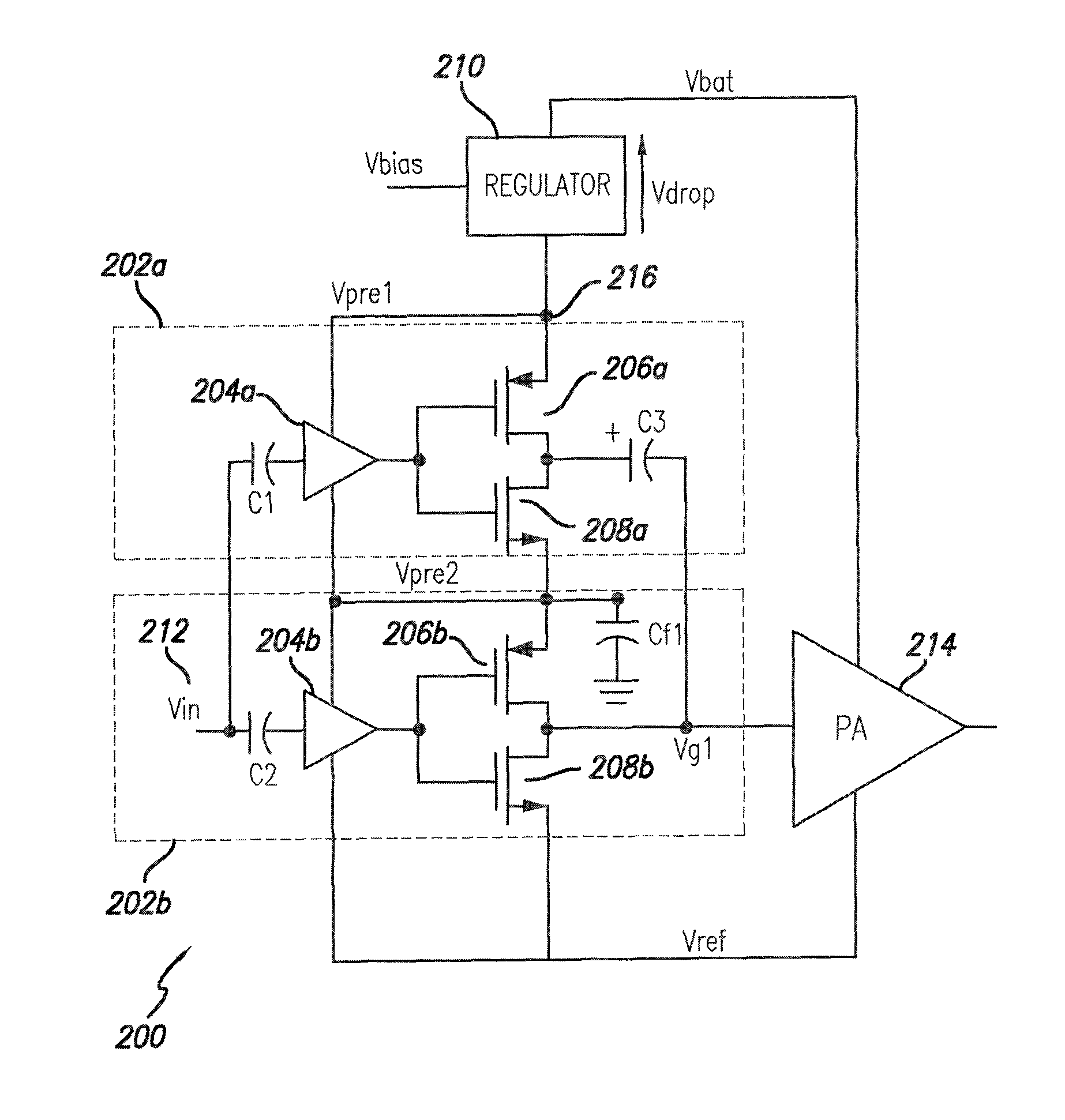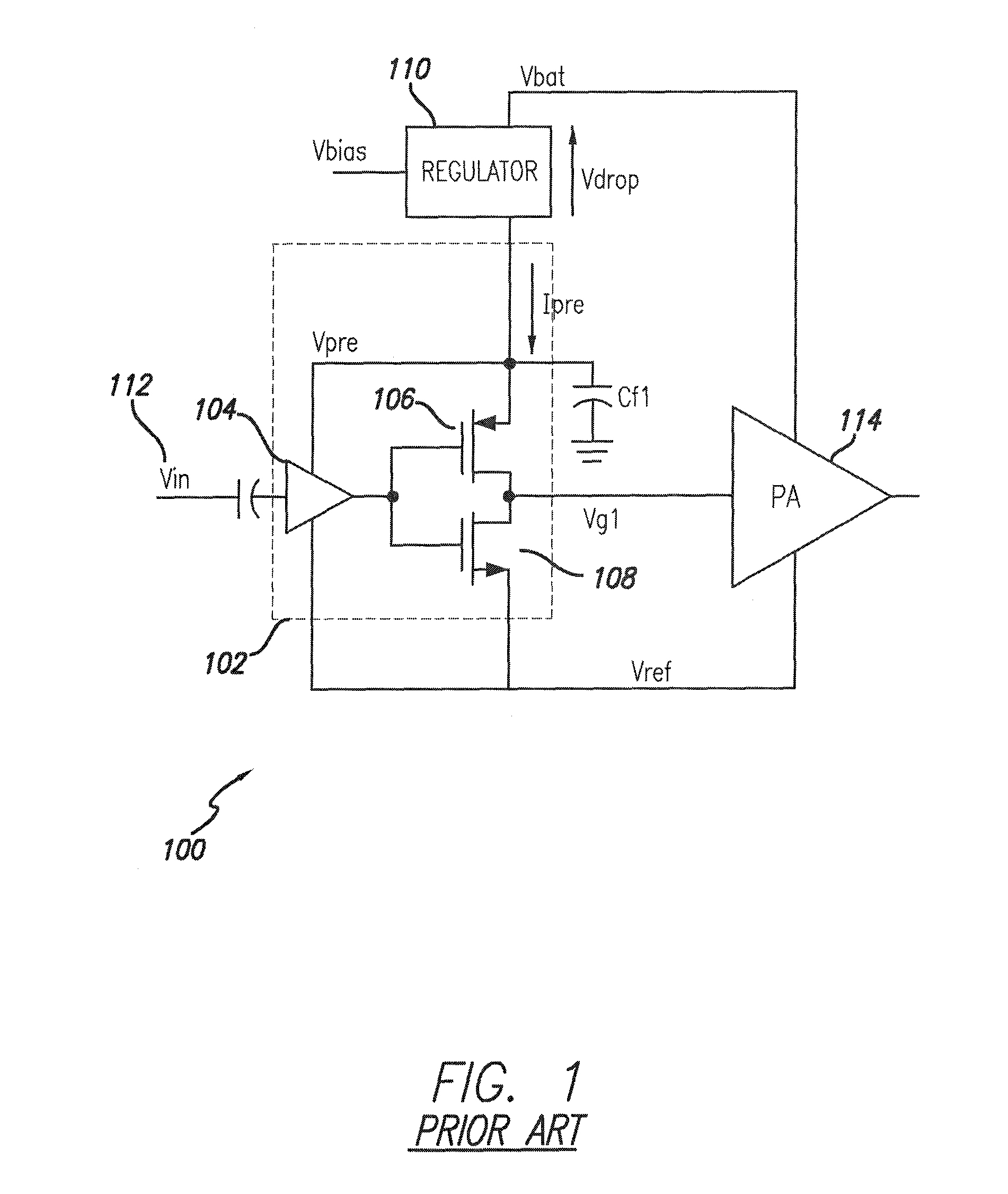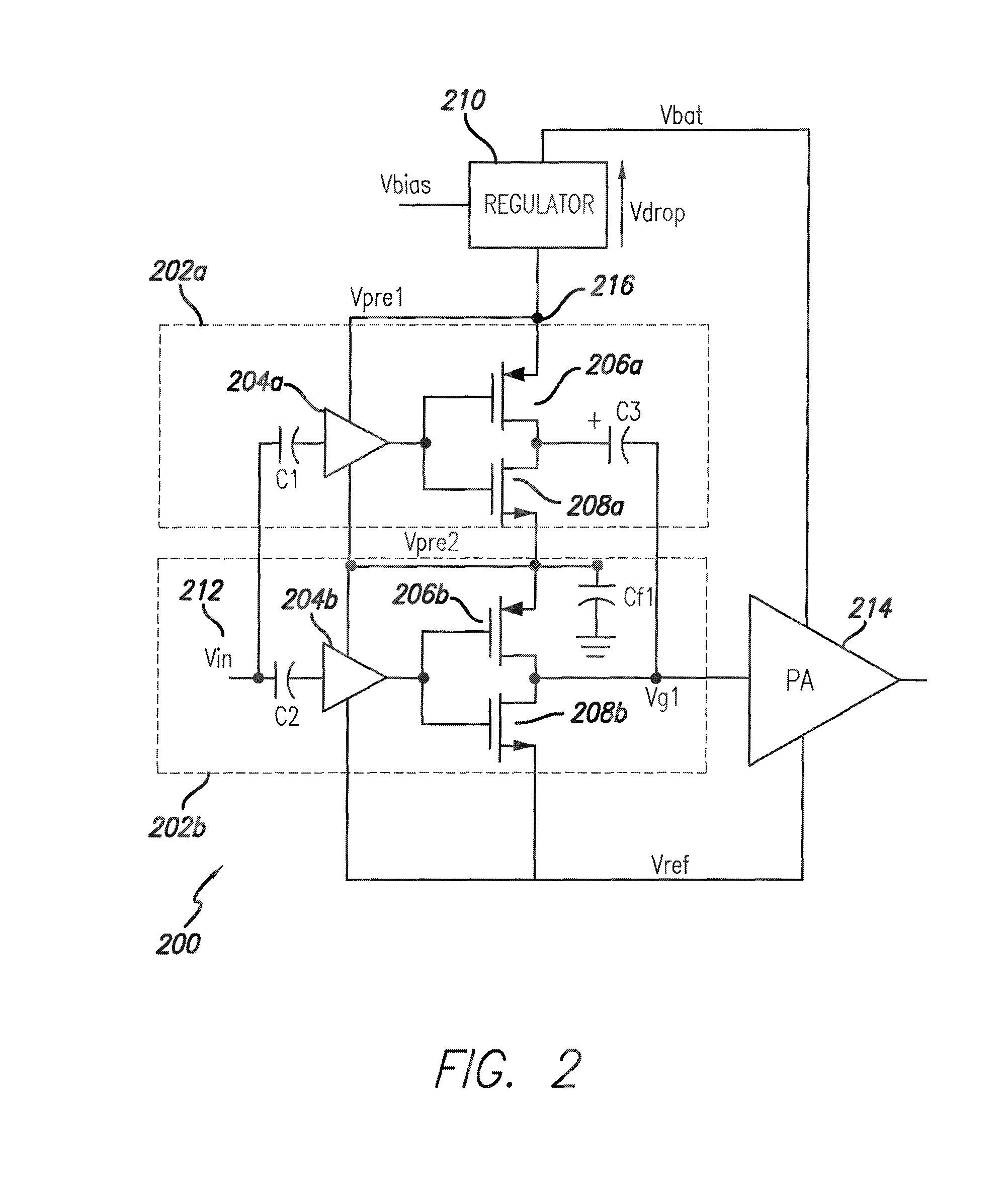Stacked pre-driver amplifier
a pre-driver amplifier and amplifier technology, applied in the field of amplifiers, can solve the problems of reducing the efficiency of the overall amplifier circuit, significant cost in creating a dc-dc converter, and power loss in the conversion efficiency, so as to reduce or eliminate power waste, improve efficiency, and reduce voltage
- Summary
- Abstract
- Description
- Claims
- Application Information
AI Technical Summary
Benefits of technology
Problems solved by technology
Method used
Image
Examples
Embodiment Construction
[0026]FIG. 2 shows a block diagram of a power amplifier with a split pre-driver arrangement in accordance with an embodiment of the present disclosure. As shown in FIG. 2, a first pre-driver circuit (202a) is connected to the power supply voltage Vbat in series with a second pre-driver circuit (202b). Therefore, in accordance with this embodiment, the power supply voltage Vbat−Vref is dropped across Vdrop, Vpre1, and Vpre2. In particular, Vbat−Vref=(Vbat−Vpre1)+(Vpre1−Vpre2)+(Vpre2−Vref). By way of example and not of limitation, Vref can be assumed to be equal to electrical ground and Vdrop of regulator (210) is assumed to be equal to zero. In such exemplary embodiment, it follows that Vpre1=Vbat.
[0027]An external source signal Vin (212) is, for example, a RF signal that is capacitively coupled to pre-driver amplifiers (204a) and (204b). In the embodiment of FIG. 2, pre-driver amplifiers (204a) and (204b) amplify the signal Vin (212) without inverting it. Therefore, when Vin (212) i...
PUM
 Login to View More
Login to View More Abstract
Description
Claims
Application Information
 Login to View More
Login to View More - R&D
- Intellectual Property
- Life Sciences
- Materials
- Tech Scout
- Unparalleled Data Quality
- Higher Quality Content
- 60% Fewer Hallucinations
Browse by: Latest US Patents, China's latest patents, Technical Efficacy Thesaurus, Application Domain, Technology Topic, Popular Technical Reports.
© 2025 PatSnap. All rights reserved.Legal|Privacy policy|Modern Slavery Act Transparency Statement|Sitemap|About US| Contact US: help@patsnap.com



